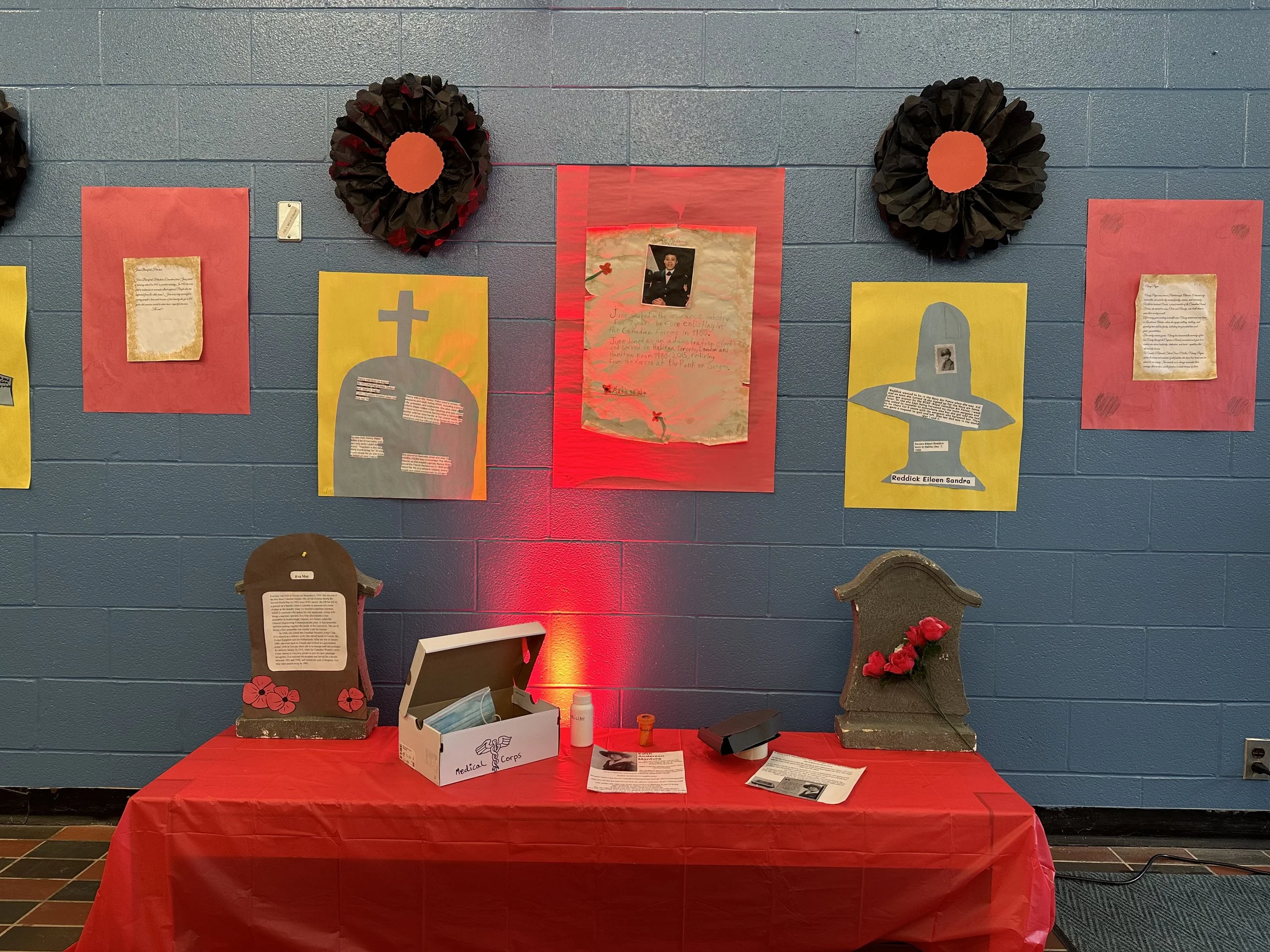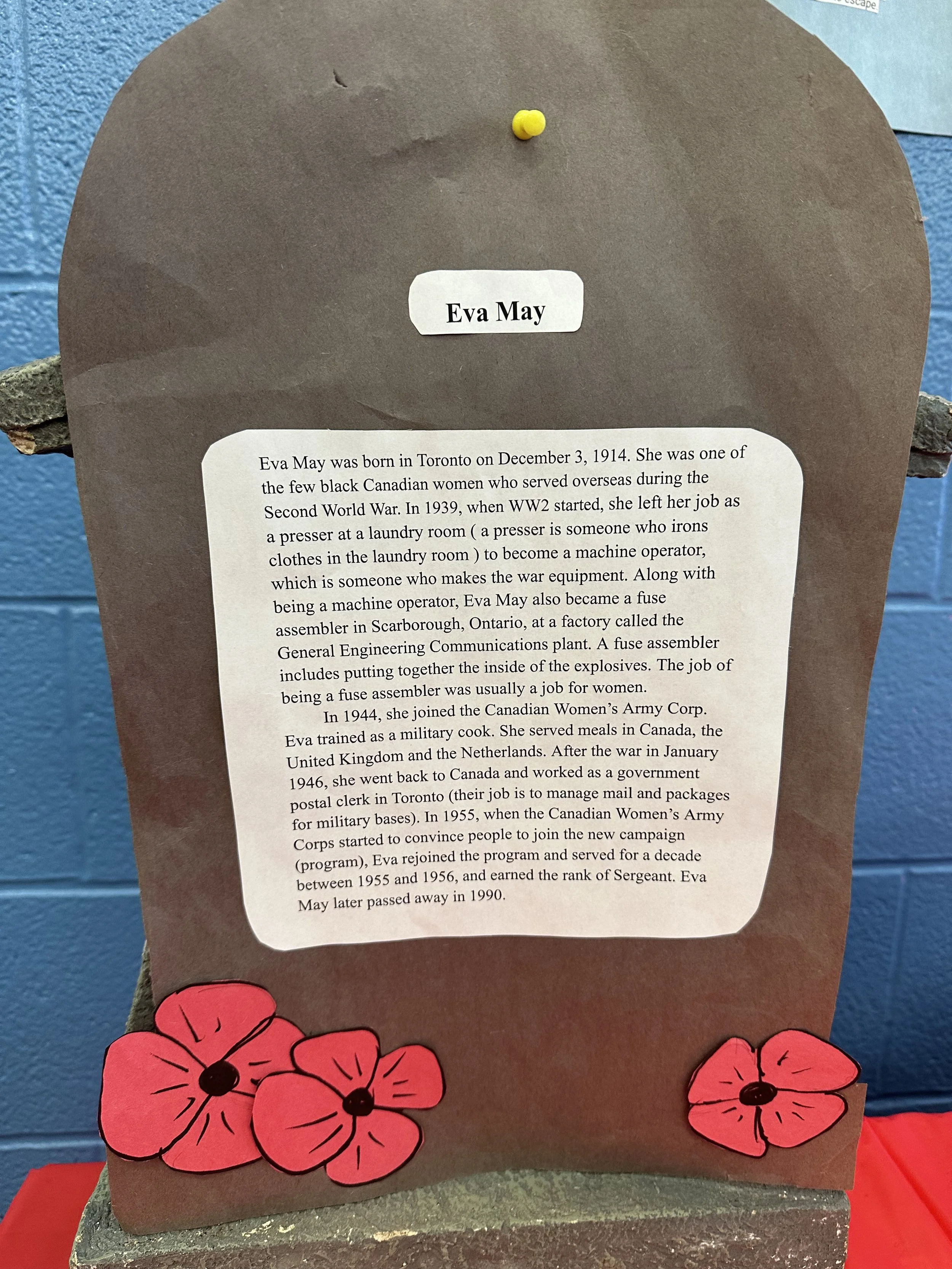Empathy and Remembrance at Brookmill Public School
When I arrived at Brookmill Public School on the morning of November 11, 2025, I was met with a powerful scene of remembrance. The halls were filled with letters written from the perspectives of nurses, soldiers, and family members. A small suitcase, carefully constructed by students, replicated one they had studied in class. Nearby, commemorative art and digital slides told stories of courage, sacrifice, and care through the eyes of those who served.
This work was part of how students in grades 5 and 6 chose to commemorate Remembrance Day after participating in I-Think’s Remembrance Day Challenge Kit. When given the choice of where to focus their inquiry, the students selected Women’s and Indigenous perspectives, choosing to highlight voices and experiences that are often overlooked. “They really saw themselves in this learning,” said Principal Helena Syptak. “We talk about culturally responsive pedagogy, and this was it in action. Seeing students connect so deeply to the stories was powerful.”
Teacher Sunny Tang explained that the project evolved in ways the staff didn’t expect once students began leading the work. “For example, we weren’t planning to include In Flanders Fields, but one student brought the poem in Mandarin and wanted to share it. So we found a way to include it in the ceremony.” The students designed a 20-minute ceremony that they felt would be meaningful and age-appropriate for their peers. It began with a Land Acknowledgement read in English, French, and Anishnabeg, followed by dramatic tableaux, readings of poems and quotes, and a closing act where students carried poppy petals from different corners of the gym to a wreath at the center. By the end, the petals formed a single, striking poppy.
For many students, the experience was both emotional and challenging. A student who read the Land Acknowledgment in Anishnabeg, said, “It was kind of scary. There were a lot of people. But I wanted to share my language. It felt important.” Another student who served as the narrator for the tableaux reflected, “I was really anxious at first, but afterward I felt relief and proud that I did it.”
The learning process behind the ceremony included thinking tools from I-Think’s framework such as the Pro-Pro Chart and the Ladder of Inference to help them reflect more deeply on their ideas. One student said, “It was hard to only look at the pros. I’m used to looking at the pros and cons. It helped me think in a new way.” Another added, “If you don’t know what other people are feeling, you can’t help them.” These activities helped students explore empathy not just as a concept, but as a way of thinking and learning. “I actually started using the Pro-Pro Chart myself,” Sunny shared. “It changed how I think about decisions, because it helps with bias.”
Empathy became a thread that connected all their work. Students described it as “feeling how others feel” and recognized its importance in both problem-solving and community-building. One group even chose the word empathy as the focus of their presentation, explaining that understanding someone else’s perspective changes how you act and respond.
As the assembly came to a close, what lingered in the room was a shared understanding students had built together, the kind that comes from listening, creating, and thinking alongside one another. One teacher reflected, “It takes a while for younger students to find their rhythm when collaborating, but once they do, the creativity just takes off.”









